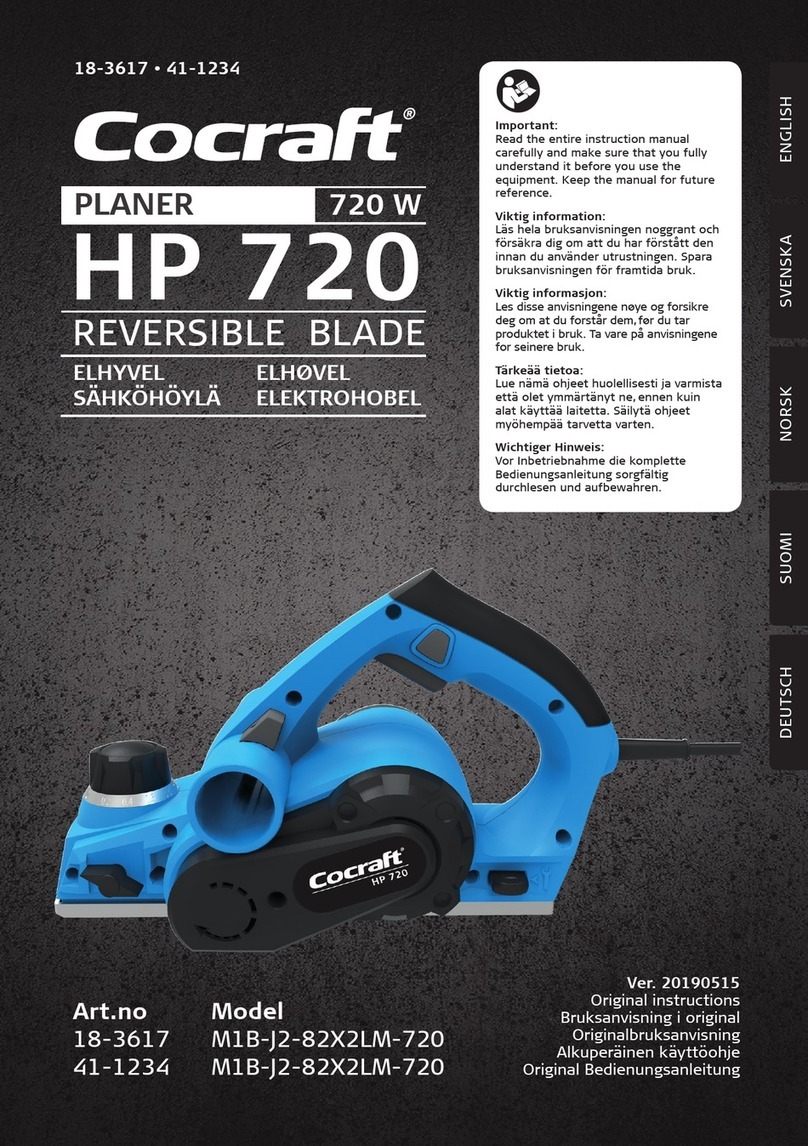
ENGLISH
4
8. Wear correct clothing.
Do not wear loosely fitting clothes or jewellery as they may get stuck in
therotatingparts. Non-slip shoes are recommended when working outdoors.
Wearahairnet or something similar if you have longhair.
9. Always wear protective goggles.
Wear protective goggles. Also, use dust filters or protective masks for dustyjobs.
10. Using suction equipment.
If themachine can attach suction equipment for dust removal, make sure
theequipment is connected and used correctly.
11. Do not handle theelectric cable roughly.
Do not jerk thecable, but instead pull theplug when you remove it from thewall
socket. Makesure electric cable does not come into contact with heat, oil or
sharpedges.
12. Fasten material correctly.
When possible, use clamps or vices to fasten theworkpiece. Itis safer than
securing theobject with yourhand.
13. Do not stretch toofar.
Make sure that you are standing securely and balanced thewholetime.
14. Keep themachine intrim.
Make sure it is clean and theedges are sharpened for optimal effect and good
results. Followthemanual’s recommendations for greasing and changing
attachments. Checktheelectrical cable regularly. Ifit is damaged it should be
changed by aqualified service technician. Inspectall theextension cables regularly
to make sure they are not damaged. Makesure that themachine handle and lever
are clean, dry and completely free from oil, greaseetc.
15. Turning thepoweroff.
Pull out theplug and push theemergency stop before servicing and changing
attachments, such as planing steel, drills, steel, sanding-belts or blades.
16. Remove all keys and servicetools.
Routinely check that all keys and service tools have been removed from
themachine before you turn thepoweron.
17. Avoid unintentional start-ups.
Do not carry amachine while your finger is on thepower switch if thecable is in
thesocket. Makesure thepower switch is set to OFF when you put theplugin.
18. Use thecorrect extension cables.
If you use extension cables outdoors, only use those intended for outsideuse.
Useextension cables with sufficient conductor lead areas and unwind
thewholecable.
19. Use Common sense and be careful.
Think carefully before carrying out anoperation, to make sure you perform it safely.
Do not use themachine when you are tired, under medicationetc.




























